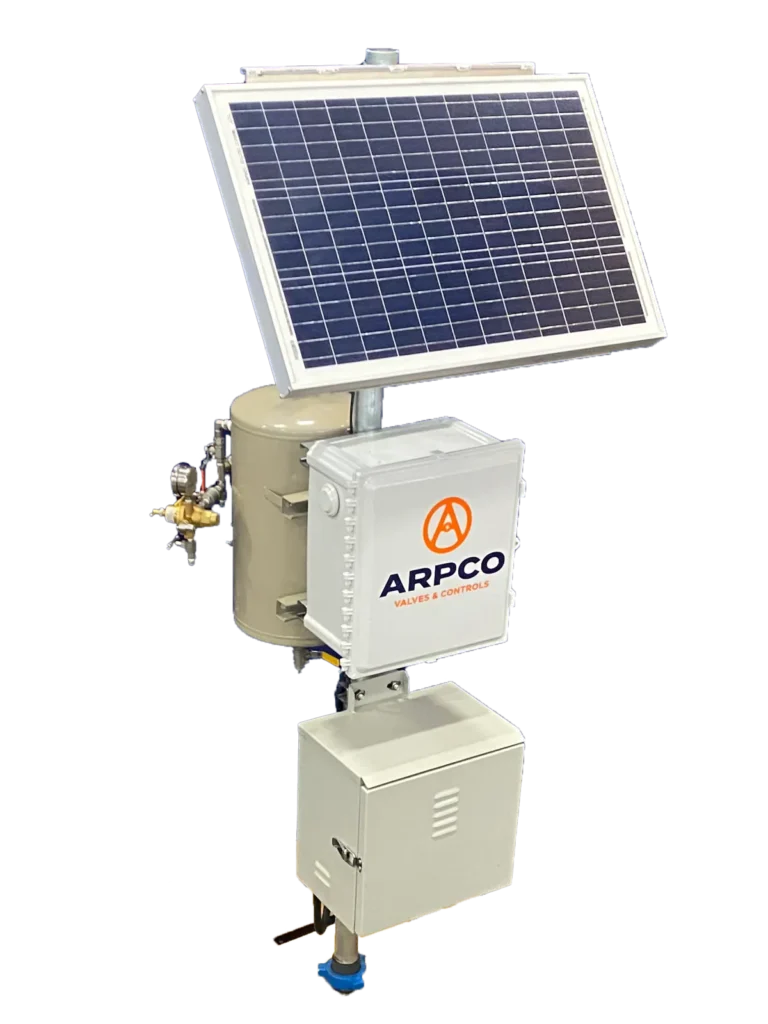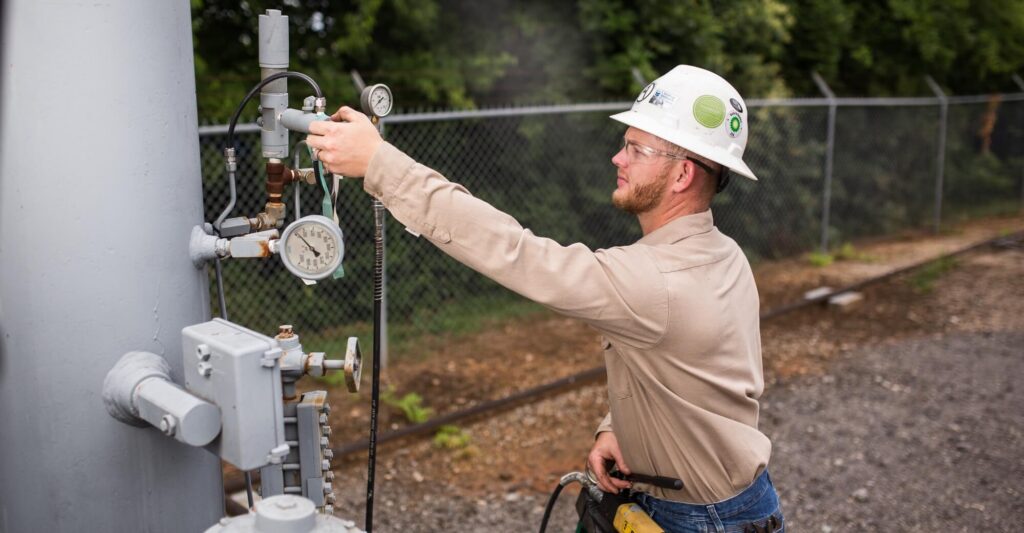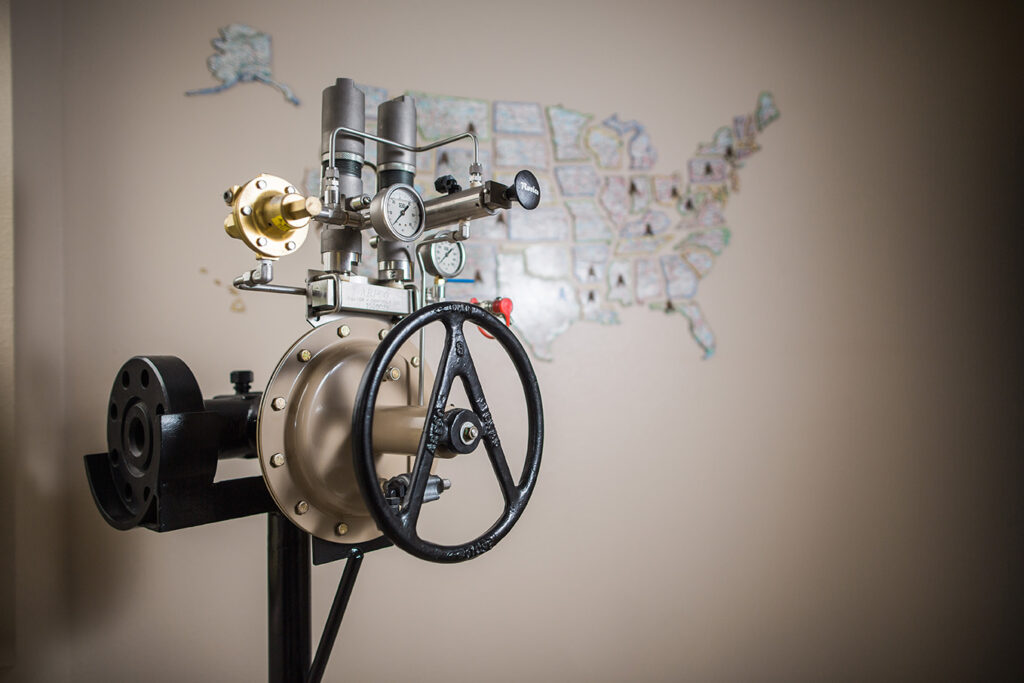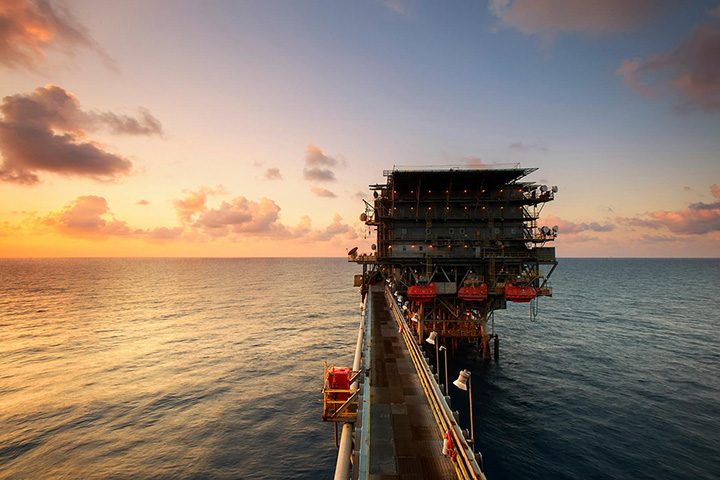
The Need for Safety Measures in the Oil & Gas Industry
Safety cannot be overstated in the oil and gas industry’s dynamic and often perilous world. Workers face numerous risks daily, from explosive gases to sudden pipeline ruptures. These hazards demand not just attention but proactive prevention. That’s where robust safety measures come into play, acting as the first defense against potential disasters. In this high-stakes arena, the goal is to manage and mitigate risks before they escalate into catastrophic events, ensuring the safety of both personnel and the environment.
Overview of Emergency Shutdown Valves
At the heart of these safety measures are Emergency Shutdown (ESD) valves, which serve as critical components in other industries to prevent industrial accidents. ESD valves are specifically designed to respond to emergencies by cutting off hazardous fluid flows instantly—think of them as the emergency brakes of the oil and gas industry. These valves are integrated into broader safety instrumented systems (SIS), which detect unsafe conditions and activate the ESD valves automatically to cease operations immediately.
Emergency shutdown valves vary widely in design and function to accommodate different requirements and scenarios. From ball valves, which provide a tight seal against high pressure, to gate valves, ideal for direct flow control, each type plays a vital role in the intricate safety landscape. Whether triggered by a pressure anomaly or a manual distress signal, these valves are pivotal in averting dangers by isolating sections of a plant or pipeline swiftly and effectively.
Types of Emergency Shutdown Valves
Ball Valves
Features and Benefits
Ball valves are renowned for their simplicity and durability, making them one of the most popular choices for emergency shutdown applications. Their design features a ball with a hole through the center, which aligns with the flow in an open position and blocks it when rotated 90 degrees to a closed position. This design allows for quick and reliable operation, which is crucial in emergencies.
One of the key advantages of ball valves is their excellent sealing capabilities, which prevent leaks and minimize the risk of hazardous fluid spills. They are also relatively low-maintenance, resistant to corrosion, and capable of withstanding high pressures and temperatures, making them highly suitable for the harsh environments in the oil and gas industry. The quick actuation of ball valves ensures that they can rapidly respond to emergency signals, effectively stopping the flow of fluids in a fraction of the time required by other valve types.
Application in the Petroleum Industry
In the petroleum industry, ball valves are used extensively to control the flow of both gas and liquid hydrocarbons. Their robust construction allows them to handle the abrasive and corrosive nature of crude oil and natural gas, which can deteriorate lesser materials. The precision with which ball valves can control the flow makes them ideal for applications where flow rate adjustments are necessary under normal operational conditions, and rapid shut-off is required in emergencies.
Placing ball valves is strategic, often located at critical points along pipelines, at the entrance and exit points of storage tanks, and near processing equipment. This placement ensures that they can quickly isolate sections of a facility to prevent the escalation of any hazardous event. By integrating ball valves into their safety systems, petroleum facilities can enhance their operational safety and maintain high efficiency in their flow control management.
Overall, the deployment of ball valves in emergency shutdown systems is a testament to their reliability and effectiveness in safeguarding industrial operations against unexpected safety breaches. Their ability to perform under pressure and in adverse conditions makes them indispensable in the petroleum industry’s ongoing efforts to maintain safety and operational integrity.
Gate Valves

Operational Mechanics
Gate valves operate by lifting a gate out of the path of the fluid, providing a clear and unobstructed passage when fully open and a complete closure when the gate is lowered. The gate moves vertically in a linear motion, driven by a turning mechanism, either a handwheel or an actuator. This type of movement makes gate valves particularly suitable for use as on/off valves, though they are not typically designed for flow regulation.
The gate design, whether solid or with a flexible wedge, allows for tight sealing when closed, utilizing the fluid pressure to enhance the seal. This mechanism is particularly effective for controlling the flow of viscous fluids and for applications involving high temperatures and high pressure, which are common in the oil and gas industry and other industries.
Advantages in Safety Systems
Gate valves are valued in safety systems for providing a secure and tight shut-off. Their ability to maintain a seal against high-pressure differentials makes them indispensable in emergency shutdown systems, where preventing the backflow of hazardous fluids is critical to safety. The robust design of gate valves also means they are less susceptible to dirt and debris, maintaining functionality in environments where other valves might fail.
Additionally, the gate valve’s design minimizes the valve components’ turbulence and erosion, extending these components’ operational life and reliability in safety-critical applications. This durability ensures that safety systems remain operational over long periods, even under harsh conditions.
Actuated Valves
Types of Actuators (Electric, Pneumatic, and Hydraulic)
Actuated valves are enhanced with devices that operate the actuated valve remotely or as part of an automated system. There are three primary types of actuators used for actuated valves in the oil and gas industry:
- Electric Actuators: These use an electric motor to operate the valve mechanism. They are suitable for precise control and are often used where fast action and remote control are required. Electric actuators are ideal for environments where compressed air is not readily available.
- Pneumatic Actuators: These utilize compressed air to move the valve mechanism, providing a powerful and cost-effective solution for operating valves. Pneumatic actuators are preferred in explosive environments as they do not generate sparks.
- Hydraulic Actuators: Using fluid pressure to move the valve, hydraulic actuators offer extremely high force outputs for large valve operations and are particularly effective in heavy-duty applications where reliability is critical.
Importance in Automated Safety Protection
Integrating actuators into valve designs transforms manual valves into vital components of a modern automated safety protection control system. Safety control systems can trigger actuators to respond instantly to emergencies, ensuring rapid and reliable action to mitigate risks.
The ability to operate remotely or automatically allows these valves to function as integral parts of safety instrumented systems (SIS), reacting to safety logic commands without human intervention. This capability is essential for minimizing human exposure to hazardous conditions and executing emergency shutdown procedures swiftly and effectively during hazardous events.
The use of actuated valves in emergency shutdown systems underscores their role in enhancing overall plant safety and operational continuity, reinforcing the critical nature of automation in maintaining safety and efficiency in hazardous industries like oil and gas.
The Role of Emergency Shutdown Valves in Safety Systems

How ESD Valves Enhance Safety Protocols
Emergency shutdown (ESD) valves enhance safety protocols within highly regulated industries. When integrated with safety instrumented systems (SIS), these valves provide a failsafe mechanism that immediately reacts to dangerous changes in operational conditions. By automatically executing shutdown procedures in response to signals such as excessive pressure, temperature, or flow rate, ESD valves help prevent accidents and protect both equipment and personnel. This integration ensures that operational disruptions are minimized and safety responses are executed with precision and reliability.
Functional Safety and Compliance
ESD valves are integral to achieving functional safety, a concept focused on the part of the overall safety protection system that depends on a system or equipment operating correctly in response to its inputs. These valves meet stringent compliance standards set by international safety organizations, such as the International Electrotechnical Commission (IEC) and the American Petroleum Institute (API). Compliance with these standards ensures the mechanical integrity and reliability of the valves and supports regulatory approvals and industry acceptance.
Key Components of an Emergency Shutdown Valve

Valve Body
The valve body is the primary casing of an emergency shutdown valve, housing the internal components crucial for its operation. Typically made from robust materials like stainless steel or specialized alloys, the shutdown valve body is designed to withstand harsh operational environments, including exposure to corrosive or abrasive fluids. It is engineered to ensure durability and reliability, maintaining a secure enclosure for the shutdown valve’s operational mechanisms.
Actuator
The actuator is a critical component of ESD valves. It is responsible for moving the valve to the open or closed position as required. Actuators can be pneumatic, hydraulic, or electric, chosen based on the application’s specific needs and the environment in which they operate. They provide the necessary force to operate the valve quickly and efficiently, crucial for emergency response scenarios where timing is key.
Limit Switch
A limit switch in an emergency shutdown valve serves as a feedback device that confirms the valve’s position to the control system. It ensures that the valve has reached its intended open or closed position, providing critical confirmation that the safety system and protocol have been effectively executed. This feedback is essential for maintaining the safety system’s operational integrity and troubleshooting, and maintenance.
What industries use ESD valves?
Use of ESD Valves in the Petroleum Industry
Specific Needs and Solutions
In the petroleum industry, ESD valves are critical for managing the risks associated with extracting, processing, and transporting oil and natural gas. These valves address specific needs such as rapid isolation of pipelines in the event of a leak or fire, controlling the release of highly flammable vapors, and preventing environmental contamination. Solutions often involve customizing valve designs to handle the high pressures and corrosive materials inherent in petroleum operations.
Broader Applications of Emergency Shutdown Valves
Chemical Manufacturing
In chemical manufacturing, ESD valves prevent the uncontrolled release of toxic, corrosive, or explosive chemicals. They also ensure that sectional shutdowns occur swiftly and safely, maintaining system integrity and preventing potential health hazards to workers and the surrounding community.
Water Treatment Facilities
ESD valves play a crucial role in managing the flow of chemicals used in the treatment process for water treatment facilities. They prevent overflows and the accidental mixing of incompatible chemicals, leading to dangerous reactions or failures in the treatment process.
Ensuring Optimal Performance and Safety
Maintenance and Testing of Emergency Shutdown Valves
Routine Checks
Regular maintenance, including routine checks and functional testing of ESD valves, is essential to ensure they remain in optimal working condition. These checks involve visual inspections, operational tests, and diagnostics to detect potential issues before they lead to system failures.
Best Practices for Longevity and Reliability
Best practices for maintaining ESD valves include establishing a regular maintenance schedule, using only certified parts for repairs, and training maintenance personnel in the latest safety standards and operational procedures. These practices help extend the lifespan of the valves and ensure they perform reliably in critical situations.
Closure Time and Its Impact on Safety
What is Closure Time?
Closure time refers to the time an emergency shutdown valve takes to transition from fully open to fully closed. This metric is crucial in emergencies, where the speed of response can be the difference between a controlled shutdown and a safety incident.
Why Quick Closure is Essential
Quick closure times are essential in emergency scenarios to minimize the risk of damage or injury. In environments dealing with highly volatile or hazardous substances, even a few seconds can significantly impact the severity of an incident. Therefore, ESD valves are designed to achieve the fastest possible closure times without compromising the valve’s mechanical integrity.
Conclusion: The Importance of Choosing Quality ESD Valves
Summary of Benefits of ESD Valves from Arpco Valves & Controls
Arpco Valves & Controls offers a range of ESD valves engineered to meet the highest quality and safety standards. Our valves are designed with precision, incorporating advanced materials and innovative technologies to provide reliability, durability, and compliance with international safety standards.
How Arpco Ensures Industry-Leading Quality and Safety
Arpco ensures industry-leading quality and safety by adhering to rigorous testing and quality control processes. Our commitment to continuous improvement in our products and practices means that our customers receive only the most dependable and effective safety solutions. With Arpco, clients are not just purchasing a product but also investing in peace of mind, knowing that their operations are safeguarded by some of the best emergency shutdown systems available today.
Emergency Shutdown Valves FAQ

What is an emergency shutdown valve? An emergency shutdown (ESD) valve is an actuated valve designed to rapidly isolate and control the flow of hazardous fluids in a pipeline or facility during an emergency. Its primary function is to prevent accidents and protect equipment and personnel by stopping the flow of dangerous materials immediately upon detecting unsafe conditions.
How do emergency shutdown valves work? Emergency shutdown valves are part of a larger safety instrumented system (SIS). When the system detects a hazardous condition, such as excessive pressure, temperature, or flow rate, it closes the ESD valve. This action is usually performed automatically by an actuator, which can be pneumatic, hydraulic, or electric, depending on the valve’s design and the facility’s operational requirements.
What are the common emergency shutdown valves used in the oil and gas industry? The most common ESD valves in the oil and gas industry include ball, gate, and butterfly valves. Ball valves are preferred for quick operation and tight sealing, gate valves are chosen for their ability to stop the flow with minimal pressure drop completely, and butterfly valves are used for their compact size and cost-effectiveness.
Why is quick closure time important for emergency shutdown valves? It is critical because it minimizes the duration of exposure to hazardous conditions during an emergency. The faster an ESD valve can close, the less risk a hazardous substance will cause damage to the facility or possible harm to personnel. This rapid response is essential in high-risk industries like oil and gas, where delays can lead to catastrophic consequences.
How often should emergency shutdown valves be tested and maintained? Emergency shutdown valves should be tested regularly to ensure they function correctly and reliably during an emergency. The testing frequency can vary based on the manufacturer’s recommendations, the specific application, and the operating environment, but generally, performing a functional test at least once a year is advisable. Regular maintenance should include visual inspections, mechanical tests, and diagnostics to check for any signs of wear or damage.





